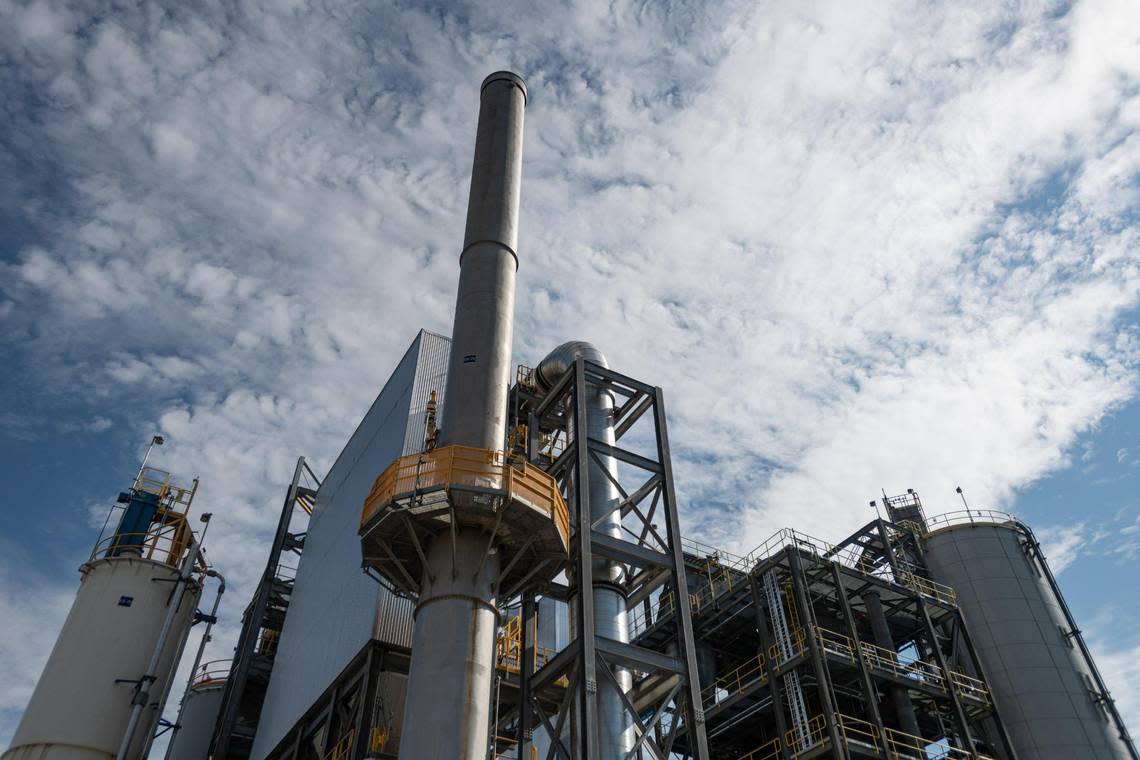Recycling centers emerge as one way to manage coal ash around the Charlotte area
If you’ve flown out of Asheville Regional Airport or driven on some of North Carolina’s interstates, chances are you’ve been on material made with recycled coal ash from Duke Energy.
With a staggering 94 million tons of coal ash left to be cleaned up in North Carolina, the utility transitioned three former coal-fired power plants in 2020 from burning coal to reprocessing coal ash.
That recycled ash can be used as an ingredient in concrete and cement. But to meet safety standards for use in construction, nearly all of the ash’s carbon content needs to first be removed.
READ MORE: Milestones and miles to go — Inside the ongoing coal ash cleanup work in North Carolina
Duke Energy uses a machine called a staged turbulent air reactor — STAR for short — to reprocess the ash, reducing its carbon content from between 6% and 15% to below 1%. The removed carbon is used to power the reactor, Duke Energy said, boosting its energy efficiency.
After being cooled, recycled ash is loaded into sealed tanker trucks and delivered to concrete producers, where it can end up on highways, at airport facilities or other uses.

Recycled coal ash does not pose a health risk when it’s encapsulated in building materials, according to the Environmental Protection Agency.
Duke Energy’s three recycling plants can process a combined 1.2 million tons of coal ash per year, company spokesman Bill Norton said in an email. The plants are in Salisbury, north of Charlotte; Goldsboro, in Wayne County; and Moncure, in Chatham County.
Coal ash recycling allows Duke Energy to “turn a byproduct into a benefit,” Norton said, “... and put it to good use.”

